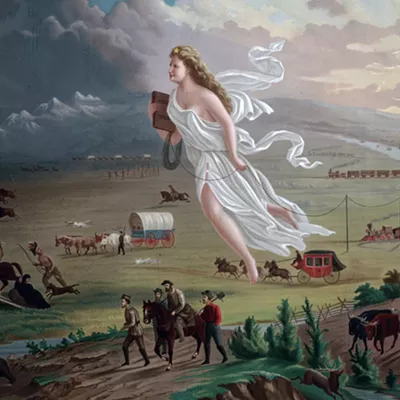In all human history, no animal species has ever gone extinct in the Yaak Valley of northwestern Montana. At least, that's what the locals claim, and they take it as a serious point of pride. In fact, it's a statistic that drives their efforts to keep from breaking the run in the face of growing concern that more roadless areas in the Yaak will soon fall victim to development. Taking up roughly 500,000 acres of the 2.4 million-acre Kootenai National Forest, the Yaak Valley is one of the wildest places in the lower 48 states and is home to the most endangered grizzly bear population in the country. For the few hundred families living in the Yaak Valley, community issues often center around the conflict between preserving the wilderness and the need for economic sustainability through timber harvests. Instead of a polarized community, however, residents in the Yaak Valley have formed a coalition. Since 1997, the Yaak Valley Forest Council (YVFC), a hodgepodge organization made-up of environmentalists, loggers, hunting and fishing guides and mill workers, has been working to protect the Yaak way of life.
"The YVFC is a community-based group interested in identifying common ground solutions in a region traditionally beset by conflict and polarization," says Rick Bass, author of Winter, The Nine Mile Grizzlies and a devoted transplant to the Yaak. Bass published The Roadless Yaak: Reflections and Observations About One of Our Last Great Wilderness Areas, drawing widespread attention to the area known to locals as "Montana's only rainforest."
"We're convinced... we can find opportunities for sustainable timber harvest, particularly in the overstocked community interface, while providing wilderness protection for the remote backcountry," Bass says. "Wilderness and logging need not be exclusive."
The YVFC is focused on preserving some of the last remaining roadless areas in the Kootenai National Forest. Bass explains that in the 1940s there were roughly 600,000 acres of roadless lands in the wild Yaak. That number, he says, is now down to about 180,000 acres -- none of it federally protected.
July marks the 40th anniversary of the Wilderness Act of 1964, and the YVFC is planning a series of celebratory events (see "Forest Fun"), despite the fact that, as Bass points out, "there's not a single acre of designated wilderness north of the Kootenai River, all the way to Canada. We think of the Yaak as the land that the Wilderness Act forgot."
"We've got something to celebrate, and that's the Act itself," says Scott Daily, YVFC program coordinator. "It gives us hope that one of these days we can have legislation passed for the Yaak."
When the Clinton administration designated roadless areas, the YVFC thought they were finally seeing their hard work pay off.
"But with Bush, it put that rule in limbo," says Daily. "What we're really looking for, as a community conservation group, is predictability. We want to know [that] we won't have to keep monitoring these areas for development.
"[The Bush Administration] spends taxpayer money to overturn the roadless rules, which was supported by well over 90 percent of Americans who commented on it," Daily continues. "There is overwhelming support for the roadless rules on a nationwide basis [so that] our children won't have to fight and can experience the wilderness."
For Daily, the forest is not simply a place they are fighting to control, but rather a complicated mirror of his rural life, which is also besieged with change, underfunding and rapid development. In many ways, the Yaak community itself is an endangered ecological system.
"I came from back east where the forests there are completely tame," says Daily. "They're beautiful, smell good, but you can sense there's something missing. It's very important [the wilderness] exists for what they provide in terms of peace of mind and allow the Yaak to be what the Yaak is."
The passion and fervor with which members of the YVFC speak is barely contained, and it's easy to see that for Yaak residents, wilderness preservation is not merely a new chic activity or a political tool; it's a struggle to remain free by way of keeping the forest free.
"Perhaps the greatest thing about forests is not their ability to absorb Co2 or filter clean water or provide habitat for the web of life," says Bass, "but that they remind us of how to feel passionate wonder for 'mere beauty.' In a world of deadliness and crises, forests -- wild forests -- offer us the opportunity to acknowledge the genius of the original creation. Questions of forest management should not be either-or, but rather, questions of balance. Just as we believe there are some areas suitable for timber harvest, or snow machine use, so too should there be areas dedicated to wilderness values."
Publication date: 07/22/04















